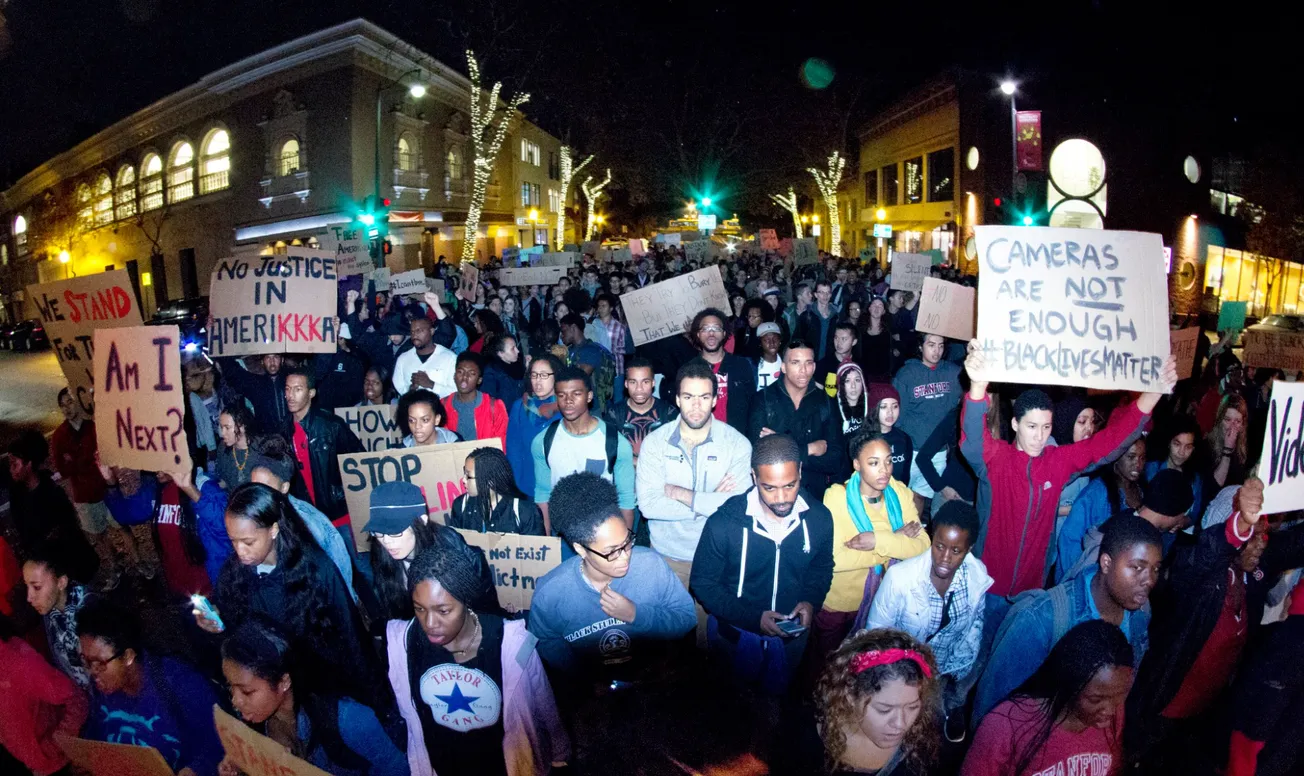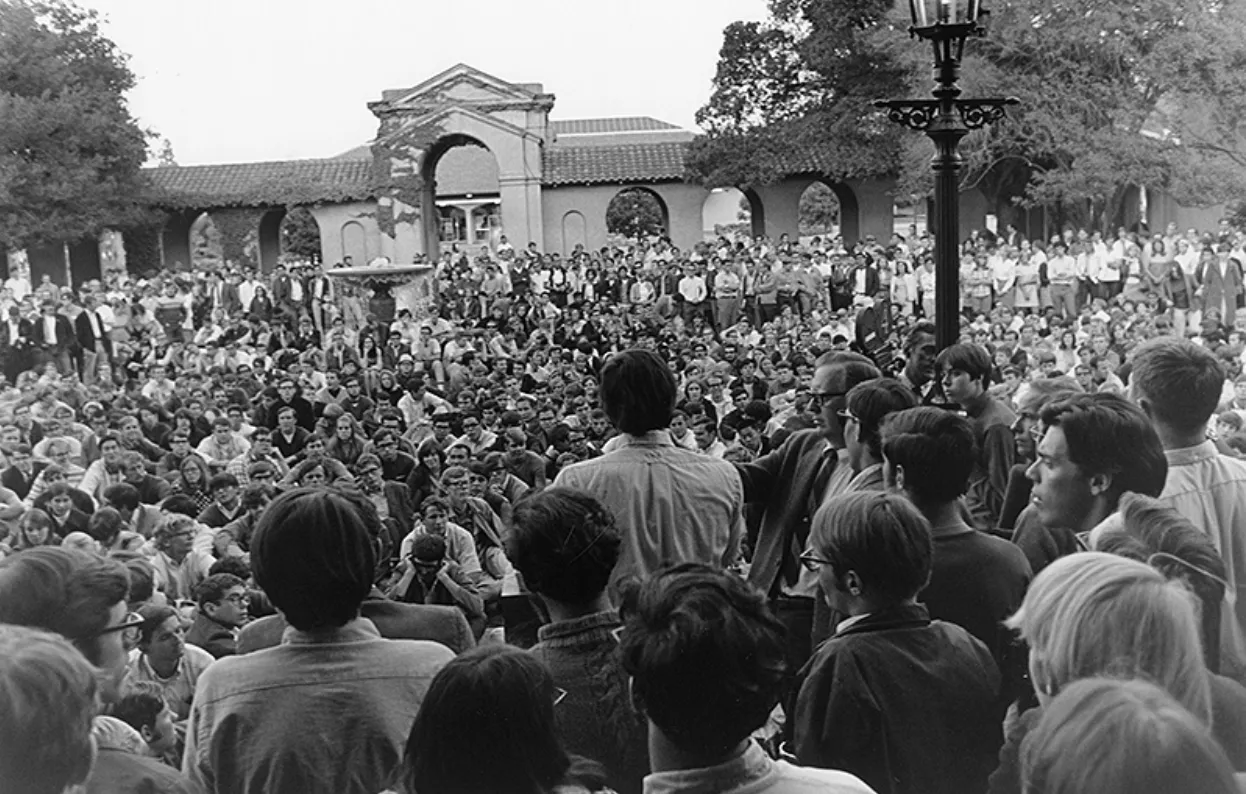Table of Contents
The Stanford community usually focuses on the goals of these individual movements and consequentially fails to discuss key insights on the intrinsic properties that identify successful movements, no matter their aims. If movements are a means to an end, then campus discourse focuses on the ends when it should address the means.
Successful popular crusades have at least two identifying characteristics: indeterminate goals and a monopolization of the moral high ground. These traits enable movements to attract many supporters with diverse interests, perpetuate the movement’s own existence, and diminish behavior from both members and nonmembers that contradicts the movement’s aims. Knowledge of these properties allows us to understand these movements at Stanford on a deeper level and assess some of the negative effects, such as a chilling of logical discourse, that intrinsically stem from movements regardless of their goals.
These negative effects do not mean Stanford students should abandon movements. However, students should question these movements and their proposals because true yet hidden insights about pressing issues cannot be discovered by adhering strictly to collectively-held beliefs even if they are compelling. These are serious issues and they deserve more serious and sophisticated debate than the bromides inherently presented by movements on all sides. The properties of many successful movements and their negative effects should make Stanford students, devoted to free inquiry and rational debate, weary of blindly following movements regardless of the group’s goals.
The Features of Successful Popular Movements
Successful popular movements have relatively indeterminate goals. For example, President Obama’s 2008 campaign used nebulous rhetoric of “hope and change”, recent sexual assault activism target other issues such as rape culture, and the Ferguson protesters at Stanford backed concepts of justice. There are at least two reasons why this trait is common in successful movements. First, ambiguous aims permit more than one plausible interpretation. Specific details can be polarizing yet ambiguity allows people with somewhat different goals to project their own desires and still support the movement. Ambiguity recruits people. Second, ambiguous aims allow the movement to sustain its own existence by altering its actions without alienating supporters. Let’s turn to the first reason this trait is common in successful movements.
Movements can squander recruiting advantages by adopting overbroad goals. There is an optimal balance between using ambiguity to attract diverse supporters and losing support when specific results do not comport with overly nebulous rhetoric. The Ferguson protesters demand better policing of black communities, a goal that justifiably attracts broad support. They neither focused entirely on the specific goal of bringing Brown’s shooter to justice nor did they expand too far beyond policing. An over-emphasis on the specific shooting would have likely reduced support due to serious evidentiary questions just as overly broad aims would have likely caused the movement to lose direction and focus.
Second, somewhat indeterminate goals are also common in successful movements because they perpetuate the organization’s existence. Specific goals without broader context cause movements to lose purpose the moment the goal is satisfied. If the protesters merely call for an indictment of Brown’s shooter, then the movement will atrophy if an indictment is filed. The protesters, like other successful movements, avoid this trap by adopting relatively broad goals of better policing. The concept of “better policing” means different things to different people yet the goal is concrete enough to maintain focus. Other groups affix themselves to equality as an end goal yet equality means very different things to people and accepted definitions shift over time. The second major characteristic of a successful movement – a monopolization of the moral high ground – allows movements to discourage and weaken dissent from both members and nonmembers. A movement that successfully associates its goals with prevailing moral norms will likely achieve its goals because disagreement about a specific position is cast, at least implicitly, as immoral. Even movements designed to shift moral norms, such as the LGBT movement, appealed to American ideals of equality under the law. The LGBT movement was unstoppable once it convinced enough Americans that its aims were the next logical step in advancing this principle.
The Ferguson movement successfully claimed a moral monopoly. Protesters held signs that blared messages such as “Black lives matter”. This moral context makes it more difficult for both movement members and nonmembers to battle the proposed policy. By implication, an acquittal of Brown’s shooter rejects widely accepted moral principles. Debate on the merits of a particular proposal is delegitimized because the movement has a perceived monopoly on morality. Indeterminate goals attract people to a movement and moral standing keeps them there, discouraging dissent.**** ****
American popular movements are essential for fostering change in a democratic society. Advancements ranging from America’s own inception to labor reform to the Civil RIghts Act stem in large part from successful movements that exhibited the two aforementioned characteristics. The Ferguson movement pushing for better policing exemplifies these positive effects. These movements had good ends, and it is a good thing they were able to use indeterminate goals and moral monopolization to achieve them. However, these two features of successful movements have negative effects along with the positives: they can silence logical debate on important issues and they can water down existing debates. Successful popular movements, no matter the merits of their ends, have these serious issues that are especially relevant at a university that claims to encourage intellectual debate and rational thought.**** ****
The Dangers of Successful Popular Movements
The moral high ground property serves as a magnet, keeping people bound to the movement and discouraging legitimate disagreement. For example, there are serious issues in the Michael Brown case. First, there are questions about the integrity of the investigation. Second, forensic evidence conclusively supports neither the defense nor the prosecution. Third, eyewitnesses have offered inconsistent accounts of what occurred that night. Regardless of one’s views on the merits of the specific case, the Ferguson movement has made it difficult to engage in logical conversation about the case other than through a moral lens. The sexual assault policy reform movement presents similar problems. All movements, however one views their goals, suffer from this intrinsic problem.**** ****
Properties of successful movements can also water down public debate. A movement’s success hinges on enlisting as many diverse supporters as possible and, as described earlier, it does this by using nebulous rhetoric. This tactic acts as a behavioral constraint on movement leadership: movement positions in public debates must not rise above an amorphous swamp or the movement will lose support. The issues facing this campus and America are complex, and neutered positions will not advance discussion. However, it is important to acknowledge the role movements have in bringing issues to public attention in the first place. Students should strike a balance between using a movement to publicize issues and encouraging sophisticated debate. Stanford has not yet struck this balance on a wide range of issues.
Movements and activism have a place at Stanford and in America. However, a student body that prides itself on logical inquiry should be mindful of the chilling effects movements can have on a rational discussion of the issues, individual thought, and the quality of public debate. By questioning movements at Stanford even if the aims are commendable, the student body can transcend broad platitudes and cliché statements and engage issues at a level that is currently missing from the Farm.







